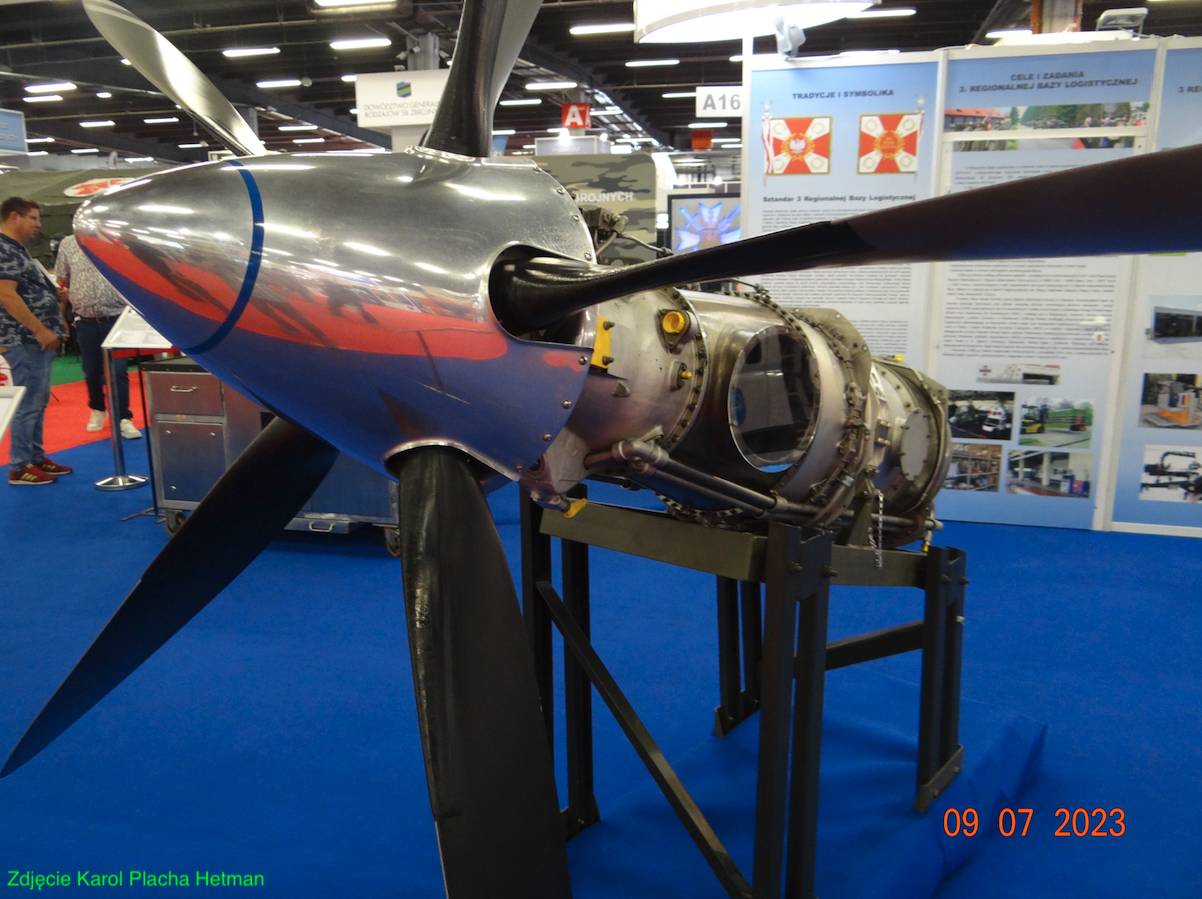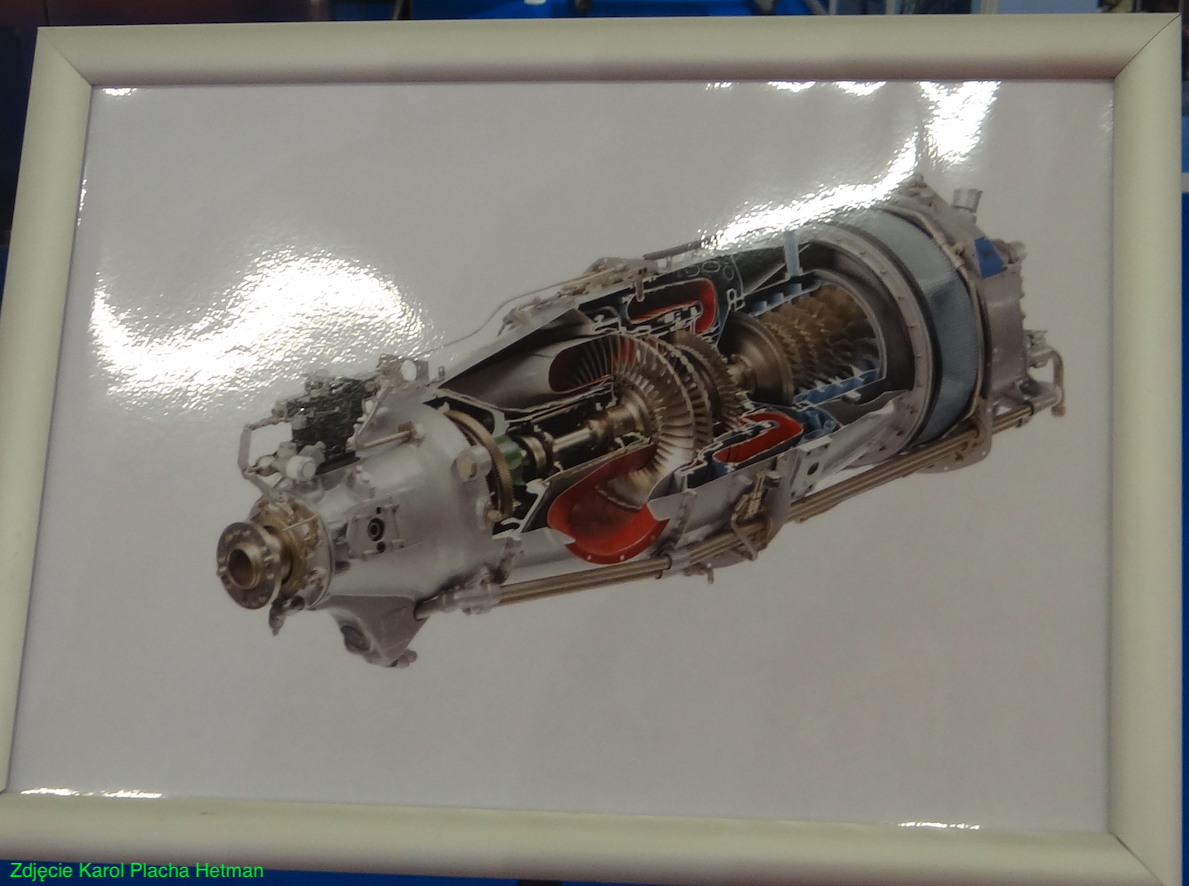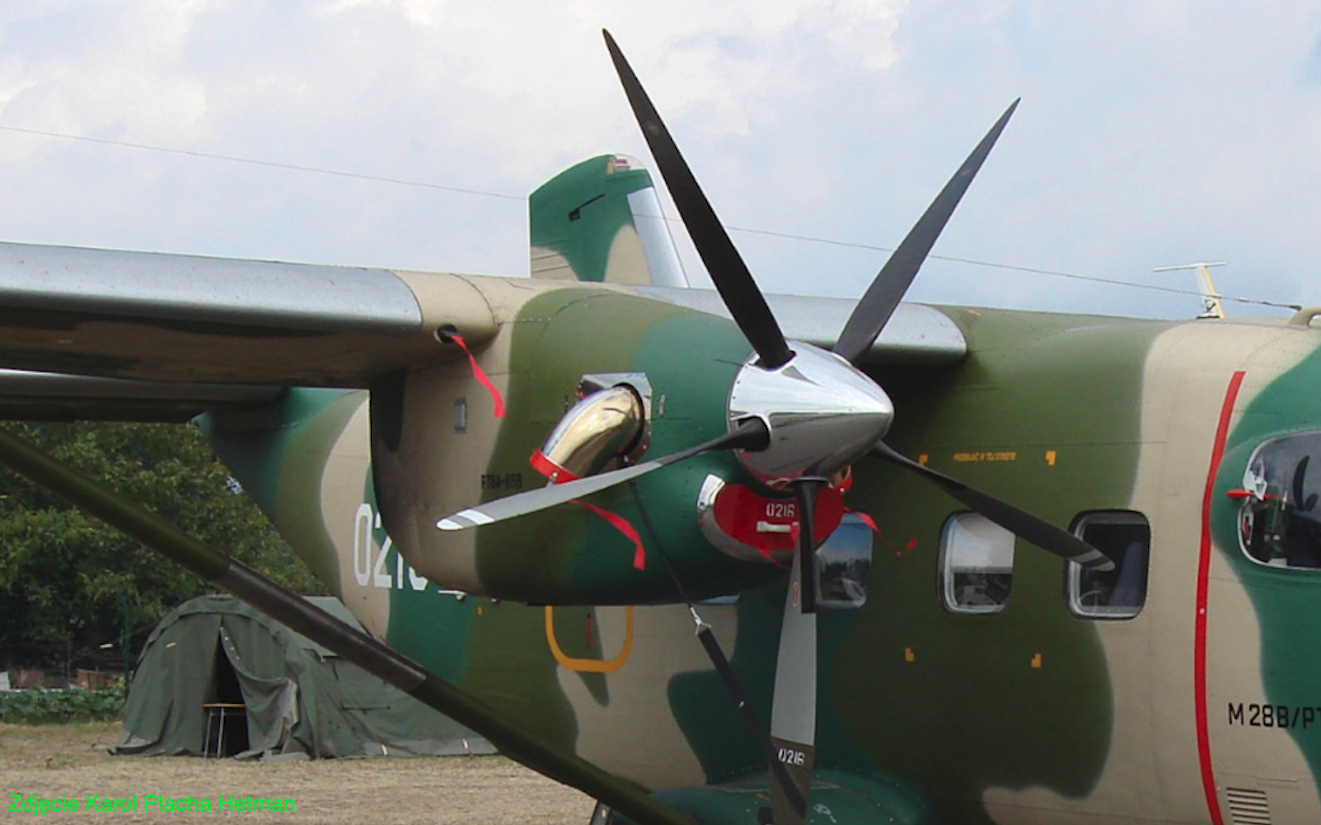Kraków 2023-09-13
Pratt & Whitney Canada PT6A-65B turboprop engine. 2023 year.
After the socio-economic changes that began in 1989, it became clear that exporting PZL M-28 aircraft with engines from the Moscow state TWD-10 B, and even with its Polish equivalents PZL-10 S, to Western markets would not be possible. Mainly due to too high fuel consumption. Therefore, a program of equipping the aircraft with Pratt & Whitney Canada engines was undertaken. It was not difficult, because Polish-Canadian cooperation had been going on for 70 years of the 20th century.
Pratt & Whitney Canada PT6 family engines are one of the most popular turboprop engines in the world. PT6 engines have gained recognition for their reliability. Overhaul intervals are 3,600 or 9,000 hours, and hot engine parts are 1,800 – 2,000 hours. The engines have power ranging from 500 HP to 1,600 HP. There are also engine variants for helicopters.
At Pratt & Whitney Canada, work on turboprop engines began in 1956, anticipating the need to replace piston engines with engines with a much more favorable power-to-weight ratio. A relatively small budget of $100,000 was allocated for this purpose. The program developed very slowly. It was not until 1958 that a 450 HP engine was designed. In February 1960, the first prototype was launched. Flight tests began in May 1961. Serial production began in 1963. By 2010, over 40,000 PT6 engines had been built.
The PT6 engine uses main spool technology with an additional so-called free turbine. Airflow through the engine is from the rear of the engine to the front. The engine is made of two main sections, thanks to which the engine can be easily separated and overhauled. Air enters the engine from the rear after making a 180-degree turn relative to the direction of flight. Here there is a compressor with 3 stages (or, depending on the version, 4 stages) axial and one radial stage. The compressed air goes to the annular combustion chamber, where another 180-degree turn takes place. Part of the air falls into the flame insert and the remaining part is used to cool the insert. Once again, there is a 180-degree turn. The exhaust gases are now closer to the main shaft. Now the gases go to a single-stage turbine, which drives the compressor. The main spool has a rotation speed of 45,000 rpm. Now the exhaust gases go to a free turbine, which has 30,000 rpm and drives the propeller through the shaft and reducer. The slow turbine is single-stage or, in more powerful versions, 2-stage. The propeller rotates at a speed of 1,900 rpm to 2,200 rpm. The exhaust gases escape through two side collectors, changing direction once again by 180 degrees. The main gear in the reducer is planetary type. Some aircraft powered by PT6 engines have the engines placed back to front, which makes the propeller a pusher type.
It seems spontaneous to compare the PT6 engine with the PZL-10 S engine. The PT6 engine has a much more compact structure, which makes it lighter. Despite the smaller compressor, it achieves higher rotational speeds. The temperature in the combustion chamber is higher. There is no long shaft that has to transfer torque from the rear of the engine to the front.
The PT6A-65B version was installed in the PZL M-28 aircraft. It was 1996 and two PZL M-28 aircraft with registrations SP-DDF and SP-DFB were equipped with new engines. 5-blade Hartzell propellers were also installed. Each engine has a power of 1,100 HP.
Data T-T PT6A-65B:
Height 0.90 m. Width 0.555 m. Length 1.575 m. Engine power 1,100 HP. Engine weight 218.17 kg. Compressor; 3 axial stages and 1 centrifugal stage. Rotational speed 31,537 revolutions per minute. Reverse flow annular combustion chamber with 14 Simplex injectors. Propeller rotation speed 2,200 revolutions per minute. Propeller diameter 2.8 m. Specific fuel consumption 0.347 kg/kWh.
Written by Karol Placha Hetman




